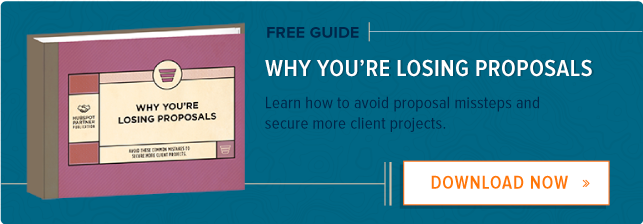

The RFP process has been a tried-and-true tool for selecting and hiring vendors across the spectrum of services. But are they still the best means of selecting a marketing services provider? Not always. These days, many brands and agencies are questioning whether this formalized process, with all its time and effort, yields proportionally greater results than a less structured approach. Too often, RFPs make agencies feel like they are handing out their creative intellectual property for free or being used to help negotiate a better deal with an existing provider.
We fully expects to compete to earn our client's business, and we enjoy the creative process competition brings. But we have found that RFPs neither serve the client nor us unless we already know the brand, have an understanding of its needs and culture, and believe there is an opportunity to develop a relationship.
Removing the Human Factor
RFPs do make sense when you can be very specific about the form and features needed or when you need standard, well-defined activities performed. But those scenarios are very different from using the format and process to evaluate creativity and determine the agency's ability to translate growth goals into specific strategies and produce deliverables to meet those goals. Your selection criteria should be well thought out, but an RFP is a poor tool for selecting the best fit for this type of relationship.
In many cases, RFPs seek to remove subjective elements of decision-making. They emphasize the quantitative facts to make an objective decision. When it comes to working with a marketing agency, many of the most important aspects of the deal hinge on human factors: creativity, knowledge, skill, thought processes, and communications styles. Success will depend on great communication, an agreed-upon process, and shared responsibility -- squishy, qualitative, human things that are very real and require subjective judgments to assess.
Creating a Selection Process
So what replaces the RFP? Brands still need a process that allows them to compare firms while also making sure the human elements are a good fit. Sending out a simple set of questions that narrows the field of providers based on core capabilities will get you a shortlist of agencies worth engaging in conversation.
What questions a brand includes depends on what kind of business they are and what areas of marketing they arelooking for outside support. Let's use inbound marketing as an example: it’s an interrelated set of marketing functions combined to specifically increase your flow of leads from online sources. Inbound marketing includes a number of disciplines, including content creation, website design, SEO, PPC, lead generation and lead nurturing (i.e., email campaigns), and social media. In this case, rather than looking for point specific marketing companies to do each of these activities -- a web design shop, an SEO company, and a content marketing firm -- brands need to frame their selection criteria to evaluate agencies best suited to delivers this combination of capabilities.
There are general evaluation points that can help you qualify potential partners. Here are a few to consider:
- Expertise: How many years experience does the agency have? How many clients has it worked with on these tactics?
- Criteria for Success: How does the agency measure success?
- Process Evaluation: Does the agency have a delivery process that helps you feel connected to the deliverables?
- Capacity: Can they agency execute the project in the timeframe allowed?
- Work Examples: Does the agency have relevant work examples that showcase its creativity?
Finally, being disciplined in early communications with your potential future partner helps to shorten the process. Include a timeframe for response and final selection. Let potential partners know why are you searching for marketing support. (Are you changing agencies or is it a new initiative that needs additional resources? Is this temporary support while you build out internal resources?) Do you have a budget? If this is a "yes," say so. By framing the request financially, you’ll see how each agency will prioritize activities to meet your goals. Agencies can put together a realistic plan to present to you that provides the support you need to meet interim and long-term goals.
Issuing an RFP is a poor method of finding a marketing partner. Instead, use a disciplined selection process. It won't make your choice easier, but it will mean you're much more likely to find the right match.

![What is a Marketing Proposal, and How Can You Create One? [Template Included]](https://blog.hubspot.com/hubfs/marketing%20proposals-1.jpg)

![8 Best Tips for Business Proposal Presentations [+Examples]](https://blog.hubspot.com/hubfs/business-proposal-presentations.jpeg)





![Bidsketch Gives Agencies the Tools to Create Proposals — Fast [Tech Profile]](https://blog.hubspot.com/hs-fs/hub/53/file-1520221479-jpg/blog-files/ruben.jpg)
